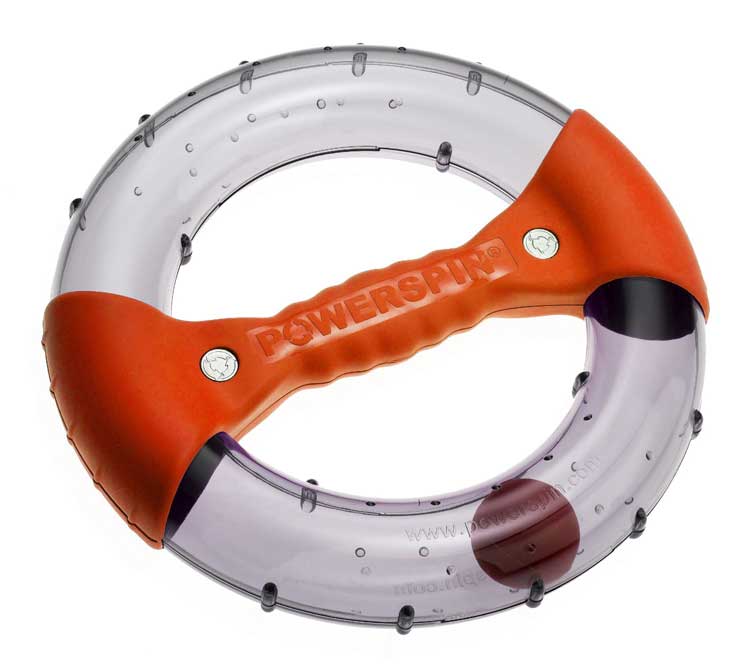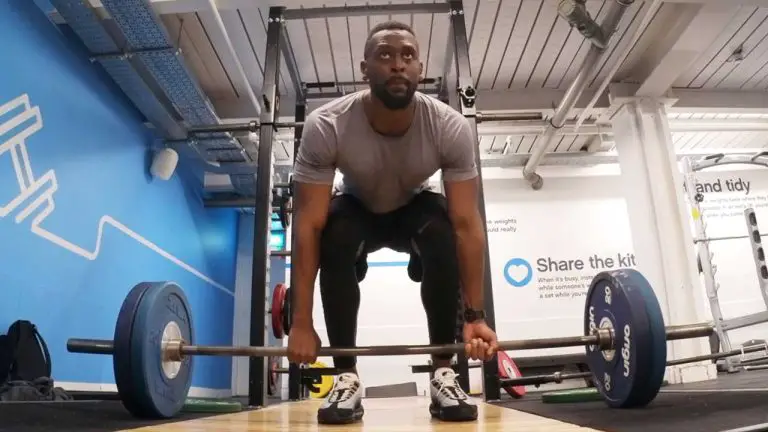Are Vans Good for Lifting? A Casual Guide for Enthusiasts
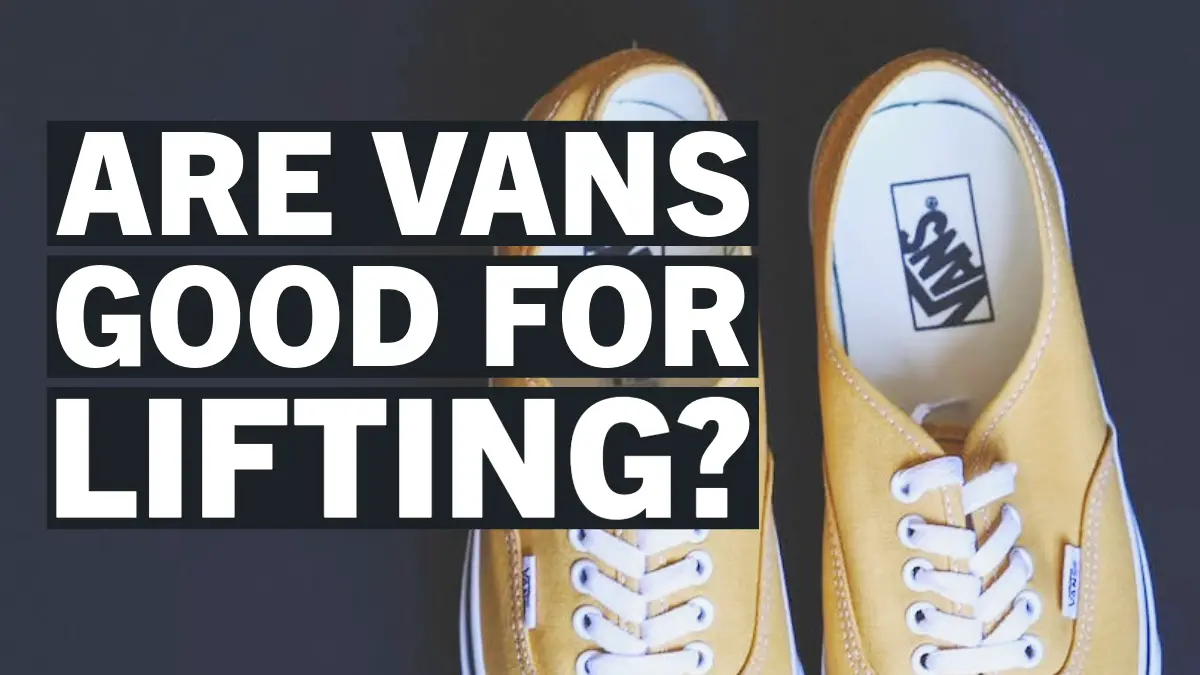
ListedFit is reader-supported. When you buy through links on our site, we may earn a small commission.
When it comes to lifting weights at the gym, the type of shoes you wear can make a significant difference in your performance and safety.
One popular option that has become a go-to choice for many fitness enthusiasts is Vans shoes.
With their flat, dense soles, they provide optimal stability and ground force transfer during key lifts like squats and deadlifts.
Their zero-drop design ensures a flat-footed position for proper form, making them a cost-effective alternative to pricier weightlifting shoes.

Summary
It’s important to note that while Vans are suitable for recreational lifters, they may not be the best choice for professional powerlifters or those who require additional ankle support.
There are other options like Converse or specialised lifting shoes that might be more appropriate for individuals looking to optimise their lifting performance.
Key Takeaways
- Vans are a popular and cost-effective option for recreational weightlifting
- They provide stability and ground force transfer for key lifts such as squats and deadlifts
- For professional powerlifters or those needing more ankle support, other footwear options may be preferable
In This Article…
What Makes a Good Basic Lifting Shoe?
Before we analyze the question of ‘are Vans good for lifting?’ and how they work in the gym, you need to know what makes a good basic lifting shoe.
If you have ever done any lifting, you know your feet need to stay put at all times, or your form will be off and you could get injured.
There are a few things you should look for in a basic lifting shoe. Are Vans good for lifting? Let’s explore this question!
- Stability
One of the most important aspects of any shoe for lifting is stability. To keep your foot stable while lifting, you need a strong outsole. A firm outsole will give you the full stability your foot needs for staying put while lifting.
Stability also comes from reinforcements in the mid-foot and heel. These reinforcements will keep your foot in place inside the shoe and prevent it from moving around. You don’t want your toes jamming into the ends of your shoes while lifting!
- Comfort
Comfort is also key with shoes for lifting. Believe it or not, lifting puts a lot of strain on your feet. Without the right level of comfort, you could be in pain temporarily or worse, permanently injure your feet.
You should always try on weightlifting shoes before buying. You also need to break them in before heading to the gym. Try wearing them around the house and make sure they offer a perfect fit before you hit the weights.
A comfortable pair of lifting shoes should not make your feet feel overly confined. You should not feel discomfort in your feet when squatting, lunging, or carrying out other weightlifting exercises.
- Durability
You also need a durable weightlifting shoe. Lifting puts a strain on your feet and shoes. If you workout a few times a week, shoes that are not durable will fail you, because they just won’t last.
You need to look for a shoe with a durable outsole and upper. Always look for a rubber outsole and leather uppers. Choose shoes made with the most durable materials to ensure they remain in good shape for years.

Are Vans Good to Workout In?
When it comes to working out, choosing the right footwear is essential for comfort, performance, and safety. So, you might be wondering, are Vans good to workout in?
Vans shoes have been quite popular in the fitness world, especially for lifting. Their flat and dense soles offer stability and efficient force transfer during key lifts, such as squats and deadlifts. Moreover, their zero-drop design ensures proper form by maintaining a flat-footed position.
While Vans can be quite effective for certain exercises, it’s important to remember that they aren’t designed specifically for workouts. These shoes are indeed comfortable and durable, but they might not provide all the support and features needed for other forms of training, such as running or high-impact exercises.
Despite their versatile nature, Vans shoes might not be the best option for every workout situation.
For instance, if you’re looking for shoes that provide extra support during lateral movements or quick changes in direction, alternatives like cross-training shoes or specific sports shoes would be a better choice.
Additionally, Vans lack cushioning, which may not make them the most comfortable option for long cardio sessions or workouts that put extra stress on the feet.

Are Vans Good for Squats?
This is quite a common question among casual weightlifters and gym enthusiasts. The simple answer is yes, Vans can be suitable for squats, and there are a few reasons why.
- Firstly, Vans have flat soles that provide a stable base for squatting. This is beneficial for maintaining proper form when squatting, as it ensures a better ground force transfer. In comparison, running shoes with cushioned soles compress under heavy loads and can negatively affect your balance and form.
- Secondly, the zero-drop construction of Vans shoes means that they have a 0mm heel-to-toe drop. This feature allows you to maintain a flat-footed position, which is crucial for proper squat form.
A flat shoe like Vans can help ensure that you engage your posterior chain muscles effectively, reducing the risk of injury. - Moreover, Vans are generally more affordable than specialised squat shoes or weightlifting shoes, making them an appealing option for those on a budget or just starting their weightlifting journey.
While they may lack some of the advanced features of dedicated lifting shoes, such as ankle support or a raised heel, many casual lifters find that Vans suffice for their needs.
It’s also worth noting that if you’re a serious powerlifter or you plan to compete in weightlifting, you may want to consider investing in footwear designed specifically for the task.
While Vans are a viable option for squatting, dedicated lifting shoes can provide additional support and stability, which could be beneficial for achieving optimal performance.
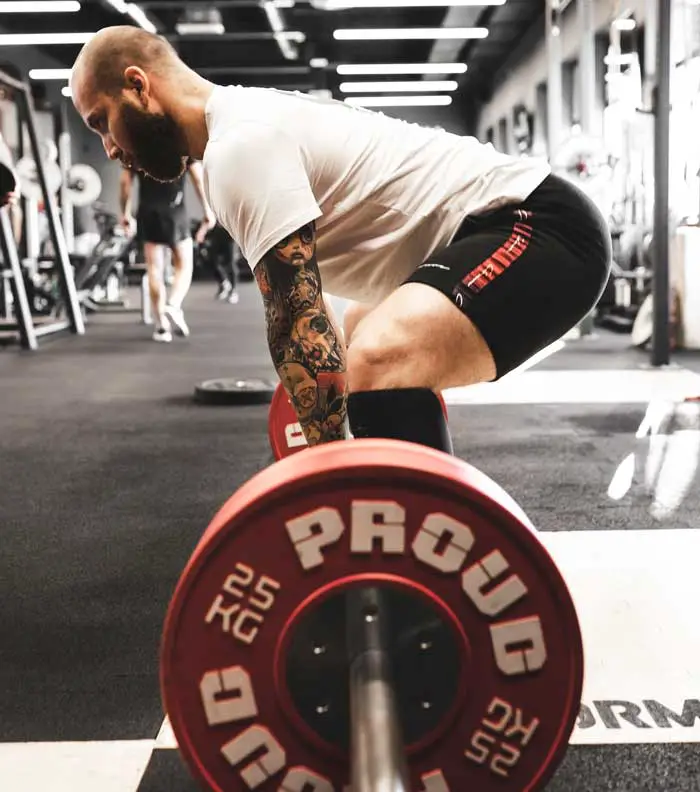
Are Vans Good for Deadlifting?
When it comes to deadlifting, you might be wondering if Vans are a suitable choice for footwear. While Vans shoes do provide certain benefits for lifting, they may not be the ideal option specifically for deadlifting.
Since Vans have flat, dense soles and a zero-drop design, they can offer stable footing for your lifting exercises. This is particularly advantageous when performing squats, as the zero-drop design allows for a flat-footed position, facilitating proper form. Furthermore, Vans don’t compress under heavyweight, which can translate into better stability during these exercises.
However, deadlifting demands not only stability but also certain specific features that may not be present in Vans shoes. For instance, ankle support is quite essential for powerlifters, especially during deadlifting, to ensure optimal performance and minimise injuries. Unfortunately, Vans might not offer the required level of ankle support suitable for deadlifting.
It’s important to remember that Vans were not designed for weightlifting, and while they offer some benefits, they might not be directly transferable to all types of lifts. Just as running shoes are not ideal for lifting, similarly, simple skate shoes or casual sneakers like Vans might not fulfil the requirements of more specialised exercises such as deadlifting.
Potential Downfalls of Using Vans for Lifting
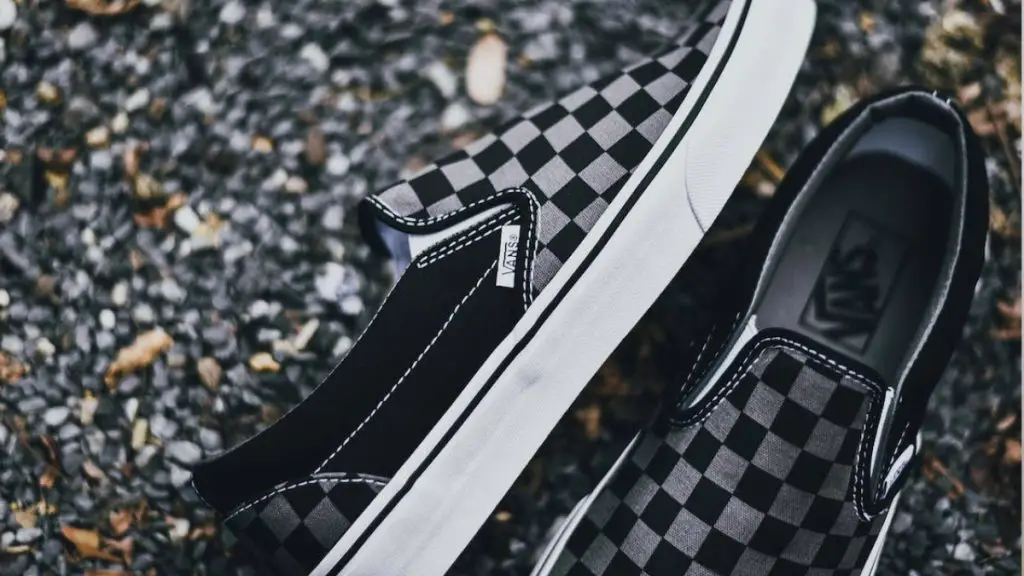
Although Vans can be a popular choice for lifting, they may not be the perfect fit for everyone. In this section, we’ll discuss the potential downfalls of using Vans for lifting, including lack of specific features and possible safety concerns.
Lack of Specific Features
Vans are a versatile shoe, but they might lack some features specifically designed for weightlifting. For example, dedicated lifting shoes often have:
- Raised heels: This helps improve ankle mobility and maintains proper squat form. Vans, on the other hand, have a flat sole which could limit your range of motion in certain lifts.
- Stiff soles: Lifting shoes typically have stiffer soles to provide better force transfer between your feet and the ground. Vans soles are quite dense, but may not be as stiff as some lifting shoes, which might result in a loss of power during lifts.
- Straps: Some weightlifting shoes come with straps for additional support and a more secure fit. Vans usually have laces, which might not provide the same level of security as straps.
Possible Safety Concerns
Using Vans for lifting might also present some safety concerns:
- Slipping: While Vans soles are generally grippy, they may not provide the same level of traction as a specifically designed lifting shoe. This could potentially result in slipping during intense workouts, especially on wet or slippery surfaces.
- Lateral support: Vans may not offer the same level of lateral support as lifting shoes, making it difficult to maintain proper form during heavy lifts, like squats and deadlifts. This lack of support might increase the risk of injury if you’re not cautious.
Overall, while Vans can be a suitable option for some lifters, it’s essential to understand their limitations and potential drawbacks before making them your go-to lifting shoe.
Are Vans Good for Running?
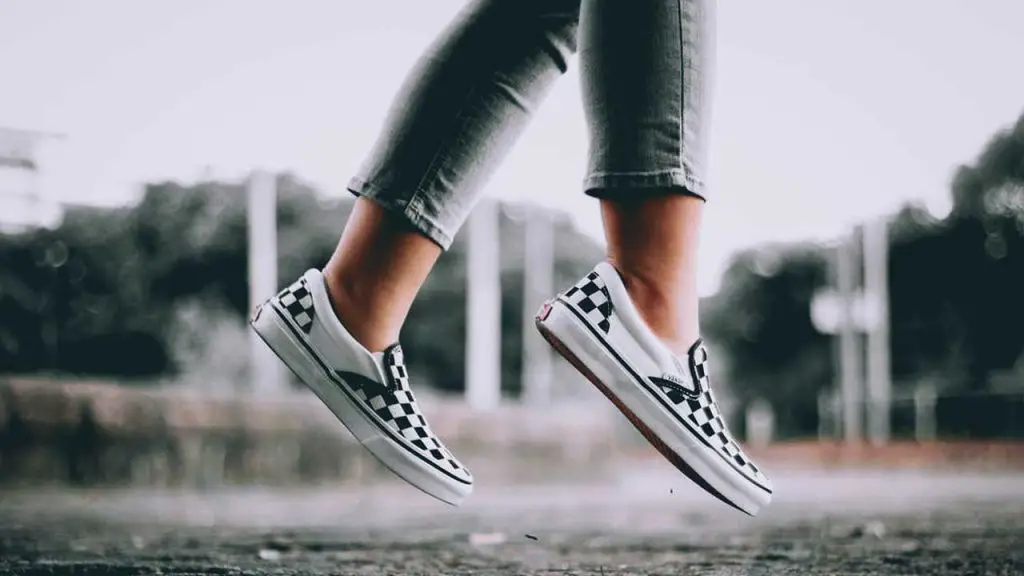
If you have a favourite pair of Vans, it might be tempting to wear them on a run. I have to say from personal experience, this is not a good idea. Believe me, I wanted it to work, but Vans are not good for running!
- Flat Sole
The problem comes with the flat sole of the shoe. When you are running, you need a flexible sole to move with your foot and help absorb shock. Vans cannot deliver in this area because they are too rigid.
- Lack of Breathability
Vans also lack breathability, making it difficult to keep air circulation around your feet. When I tried running in Vans, I found my feet sweated profusely and ended up causing blisters on a couple of my toes.
- Lack of Flexibility
When you are running, your shoe needs to be springy and flexible. Running shoes bend with each movement, allowing your feet to spring up and keep your momentum. When running in Vans, your feet slap the pavement hard. It is highly uncomfortable and will leave your feet sore for days.
- Lack of Heel Security
Another reason I would not recommend Vans for running is because of the lack of heel support and security. I found my Achilles tendon under a great strain while trying to run in Vans. These shoes do not give the support you need in a running shoe, so don’t try them!
When comparing Vans to any running shoe, Vans are almost always going to lose. They are just not made for running. Comparing them to Nike Pegasus left my Vans in the dust.
Running shoes like Nike Pegasus cradle your foot in comfort. The level of heel security is tremendous because of the deeper heel cup.
Nike Pegasus, unlike Vans, are springy and respond well to your feet and the pavement. My feet feel like I am running on air with my Pegasus shoes, but not so much with Vans.
Are Converse or Vans Better for Lifting?

If you are into heavy lifting, you know that having the right shoes in the gym is critical. You do not want to waste your time lifting in a dangerous or uncomfortable shoe.
There are lifters on both sides of the aisle. Some say Converse are better, and some prefer Vans. I am here to break the tie and see which one holds up best.
Both shoes are similar in their makeup. Although Vans do not market these as lifting shoe, the 0mm heel-to-toe drops and fairly firm outsoles have made them both popular for lifting. But which is better?
One of the first things you will notice in the differences between the two shoes is the outsole. Vans have a tight waffle weave, while Converse has a full rubber outsole with different areas of traction.
I found Vans slightly more grippy on the gym floor. The difference might seem nominal to some, but I can tell if a lift is going to fail due to how hard my feet grip the floor.
I think Converse has a slightly firmer insole construction, which some may prefer. As far as the heel-to-toe drops, the shoes are the same.
Overall, I would say Converse and Vans perform similarly when lifting. Though I slightly prefer Vans over Converse, there are others who prefer the opposite.
Final Thoughts – Are Vans Good for Lifting?
In the world of weightlifting, the type of footwear you use can make a significant impact on your performance. So, you may wonder, are Vans good for lifting? In this section, we will discuss the suitability of Vans sneakers for lifting, and the key factors to consider when making your decision.
Vans shoes are quite popular for their flat, dense soles that provide optimal stability and ground force transfer during key lifts like squats and deadlifts. Their zero-drop design helps to maintain a flat-footed position, which is essential for proper form during these exercises. In this regard, Vans can be a decent choice for lifting.
However, although Vans may be suitable for lifting, they might not be the best choice, especially for individuals who are more serious about their strength training routine. Converse sneakers, for example, or shoes specifically designed for lifting weights, might offer better overall performance and support. When selecting footwear for weightlifting, it’s crucial to keep comfort, stability, and functionality in mind.
So to summarise, are Vans good for lifting? I would say yes they are, but they may not be the best choice for everyone. It’s essential to consider your specific needs and preferences when selecting the perfect pair of shoes for lifting. Remember, the right footwear can play a significant role in your lifting performance and help you achieve your fitness goals more effectively.
Frequently Asked Questions
Are Vans good for squats?
Yes, Vans are suitable for squats because they have flat, dense soles that provide excellent stability and ground force transfer while performing squats.
Their zero-drop design ensures a proper flat-footed position, which is crucial for maintaining good form during squats.
Which Vans model works best for lifting?
Some recommended Vans models for lifting include: Vans Authentic, Vans EVDNT UltimateWaffle, Vans Atwood, Vans UltraRange EXO, and Vans Sk8-Hi.
Each of these models offers a stable sole construction, making them suitable for lifting exercises like squats and deadlifts.
Are Vans suitable for treadmill use?
While Vans can be used for casual treadmill use, they are not specifically designed for running.
Vans tend to lack the necessary cushioning and support needed for running long distances. If you’re looking for running shoes, it’s better to opt for specialised footwear.
How do Vans compare to Converse for lifting?
Both Vans and Converse shoes have flat, hard soles, making them suitable for lifting exercises.
However, one’s preference between these two brands will likely depend on factors such as fit, comfort, and personal style.
You can try them both out and choose the one that works best for you.
Is it advisable to wear Vans to the gym?
Yes, you can wear Vans to the gym, especially if you’re engaging in weightlifting exercises. Their flat soles and stable construction make them suitable for lifts like squats and deadlifts.
However, for cardio workouts or fitness classes, you might prefer footwear that offers better support and cushioning.
Do women wear Vans for workout sessions?
Yes, women can wear Vans for workout sessions, particularly for weightlifting activities.
Like men, women can benefit from the flat, stable soles that Vans provide for exercises like squats and deadlifts.
However, they should consider their specific workout needs and choose footwear that best fits their exercise regimen.
Author
- Danny Loeb is a qualified Personal Trainer, Fitness Model and Writer. He enjoys blogging about health and fitness, messing around with Photoshop, and sharing his experiences with everyone.
Latest entries
 NutritionFebruary 6, 2024What Are Fillers in Supplements? – Unveiling Inactive Ingredients
NutritionFebruary 6, 2024What Are Fillers in Supplements? – Unveiling Inactive Ingredients FitnessAugust 23, 2023Best Post-Workout Foods: Great Ideas for Recovery and Results
FitnessAugust 23, 2023Best Post-Workout Foods: Great Ideas for Recovery and Results BulkingJuly 26, 2023Is Rice Good for Bulking? Unveiling the Truth
BulkingJuly 26, 2023Is Rice Good for Bulking? Unveiling the Truth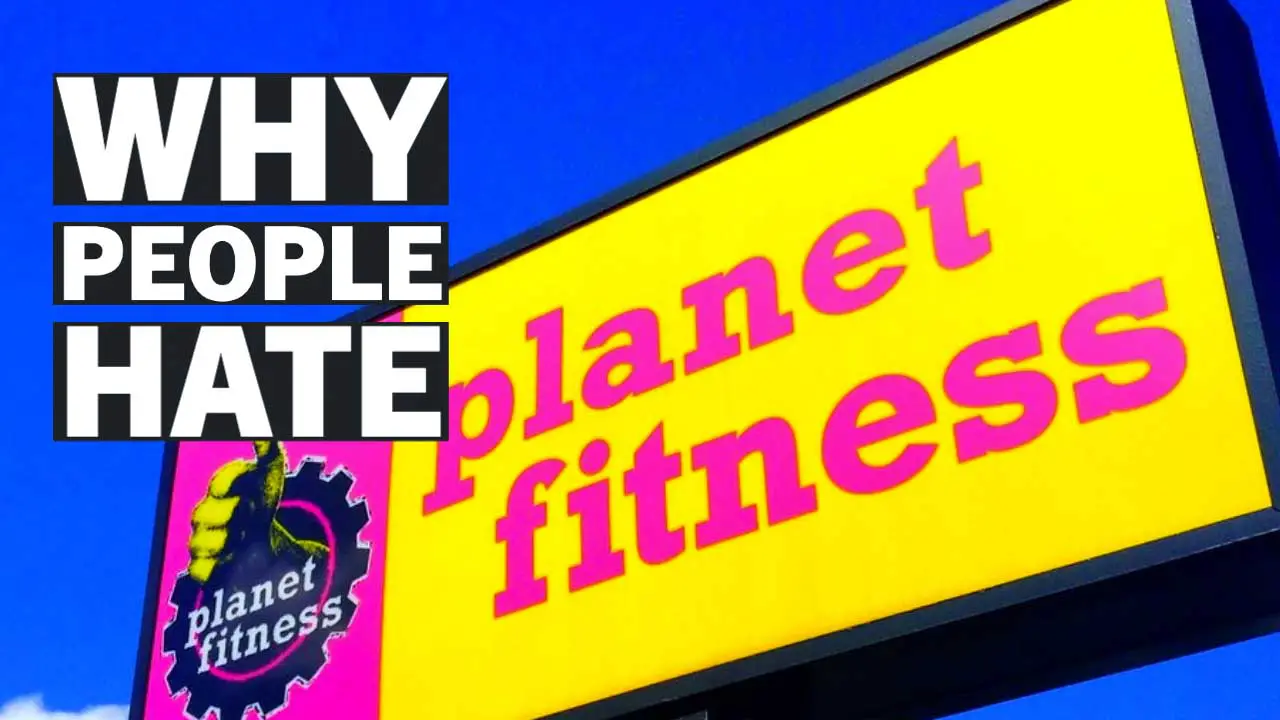 CultureJuly 15, 2023Why Do People Hate Planet Fitness? Read This Before You Join!
CultureJuly 15, 2023Why Do People Hate Planet Fitness? Read This Before You Join!
Affiliates:
This post may contain affiliate links that at no additional cost to you, the site may earn a small commission. We only recommend products we would use ourselves and all opinions expressed on this site are our own.
General Advice:
The information provided in this article is for general informational purposes only. It is not intended as a substitute for professional advice. Always consult with a qualified healthcare professional before starting any new diet, exercise program, or making changes to your health routine.
Accuracy Advice:
While we strive to provide up-to-date and accurate information, the content in this article may not reflect the most current research or medical guidelines. We encourage readers to do further research and consult with professionals for more personalized advice.
Our Recommendations:
The products and services mentioned in any of our articles are recommended based on our independent research and personal experience. We are not sponsored by any company. We aim to suggest products and services we believe are of high quality and could be beneficial to our readers.





